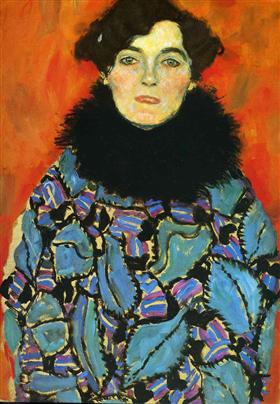As you scroll through the stunning paintings of Gustav Klimt, it’s easy to get lost in the mesmerizing details and sumptuous color schemes. From his iconic “The Kiss” to the breathtaking landscapes of his “Golden Phase,” Klimt’s work is truly a feast for the eyes.
But beyond the visual splendor of his paintings, there is a rich history and meaning behind each piece. Born in Austria in 1862, Klimt was a pioneer of the Art Nouveau movement and a major figure in the Vienna Secession, a group of artists who broke away from traditional academic styles to create more expressive and individualistic works.
Here are 10 things you might not know about Gustav Klimt that may help you experience his artwork:
1. He Was One of Seven Siblings
Gustav Klimt was born in Vienna in 1862, the second of seven children. His father was a goldsmith, and Klimt would later incorporate his family’s love of metalwork into his art.
“The Kiss”: One of Klimt’s most famous paintings, “The Kiss” is a celebration of love and sexuality that has captured the hearts of art lovers for over a century.
2. He Was Part of a Rebel Art Group
Klimt was part of a group of young artists who called themselves the Secession. They were disillusioned with the conservative art scene of their time and wanted to create a new, modern style.
The “Golden Phase”: From 1900 to 1908, Klimt embraced a more symbolic and allegorical style, resulting in some of his most iconic works, including “The Kiss” and “Judith and the Head of Holofernes.”
3. He Was Inspired by Byzantine Art
Klimt’s use of gold leaf was heavily influenced by the Byzantine mosaics he saw during a trip to Ravenna, Italy. He was fascinated by their shimmering surfaces and intricate patterns.
Intricate Patterns and Gold Leaf: Klimt’s bold use of gold leaf and intricate patterns gives his paintings a truly unique and opulent look.
4. He Was a Lover of Women
Klimt was known for his affairs with many women, including his models and patrons. He was particularly drawn to women with flowing hair and sensuous curves, which he often depicted in his paintings.
Sensual Figures: Klimt’s paintings are known for their sensual figures and themes of love and sexuality, making them both beautiful and controversial.
5. He Was a Controversial Figure
Klimt’s art was often criticized for its eroticism and symbolism. His paintings were considered scandalous by some, and he was even accused of obscenity in court.
Mythological and Cultural References: In his “Golden Phase,” Klimt incorporated mythological and cultural references into his paintings, adding layers of meaning and symbolism.
6. He Painted His First Masterpiece at Age 25
Klimt’s first major work was a mural he painted for the Vienna Burgtheater. It was a massive undertaking, covering over 300 square feet, and it established his reputation as a master of decorative art.
A Pioneer of the Art Nouveau Movement: Klimt was a major figure in the Art Nouveau movement, which sought to break away from traditional academic styles and create more expressive and individualistic works.
7. He Was Commissioned to Paint a University Ceiling
Klimt was commissioned to paint the ceiling of the Great Hall of the University of Vienna, which took him three years to complete. The controversial work featured his signature use of gold leaf and erotic imagery.
A Major Figure in the Vienna Secession: Along with other artists, Klimt broke away from traditional art organizations to form the Vienna Secession, a group that promoted modern art and design.
8. He Was Influenced by Japanese Art
Klimt was one of many European artists who were influenced by the exoticism of Japanese art. He incorporated elements of Japanese design into his paintings, such as flattened perspective and stylized patterns.
A Wide Range of Work: While Klimt is best known for his portraits and paintings, he also worked on architectural paintings and murals, showing his versatility as an artist.
9. He Co-Founded the Vienna Secession
Klimt was one of the co-founders of the Vienna Secession, a group of artists who wanted to break away from traditional art forms and create a new, modern style. The group held its first exhibition in 1898 and was a major force in the Viennese art scene for many years.
A Legacy That Lives On: Despite the success of his “Golden Phase,” Klimt’s later years were marked by personal struggles and declining health. He died in 1918 at the age of 55, leaving behind a legacy that continues to inspire and captivate art lovers to this day.
10. He Created Over 200 Paintings
Throughout his career, Klimt created over 200 paintings, as well as numerous sketches and drawings. His works are known for their intricate patterns, bold colors, and, of course, their use of gold leaf.
A Wide Range of Klimt Products are Available: From reproductions of his famous paintings to decorative items featuring his iconic designs. His paintings have brought in some of the highest prices ever paid at auction, but there are plenty of affordable, alternative ways to bring a touch of Klimt into your home.
Are you a fan of Klimt’s opulent style and shimmering surfaces? Let me know in the comments below.
Looking to explore more art genres? Head over to JoeLatimer.com for a multidisciplinary, visually stunning experience.
Enjoy this blog? Please help spread the word via:













